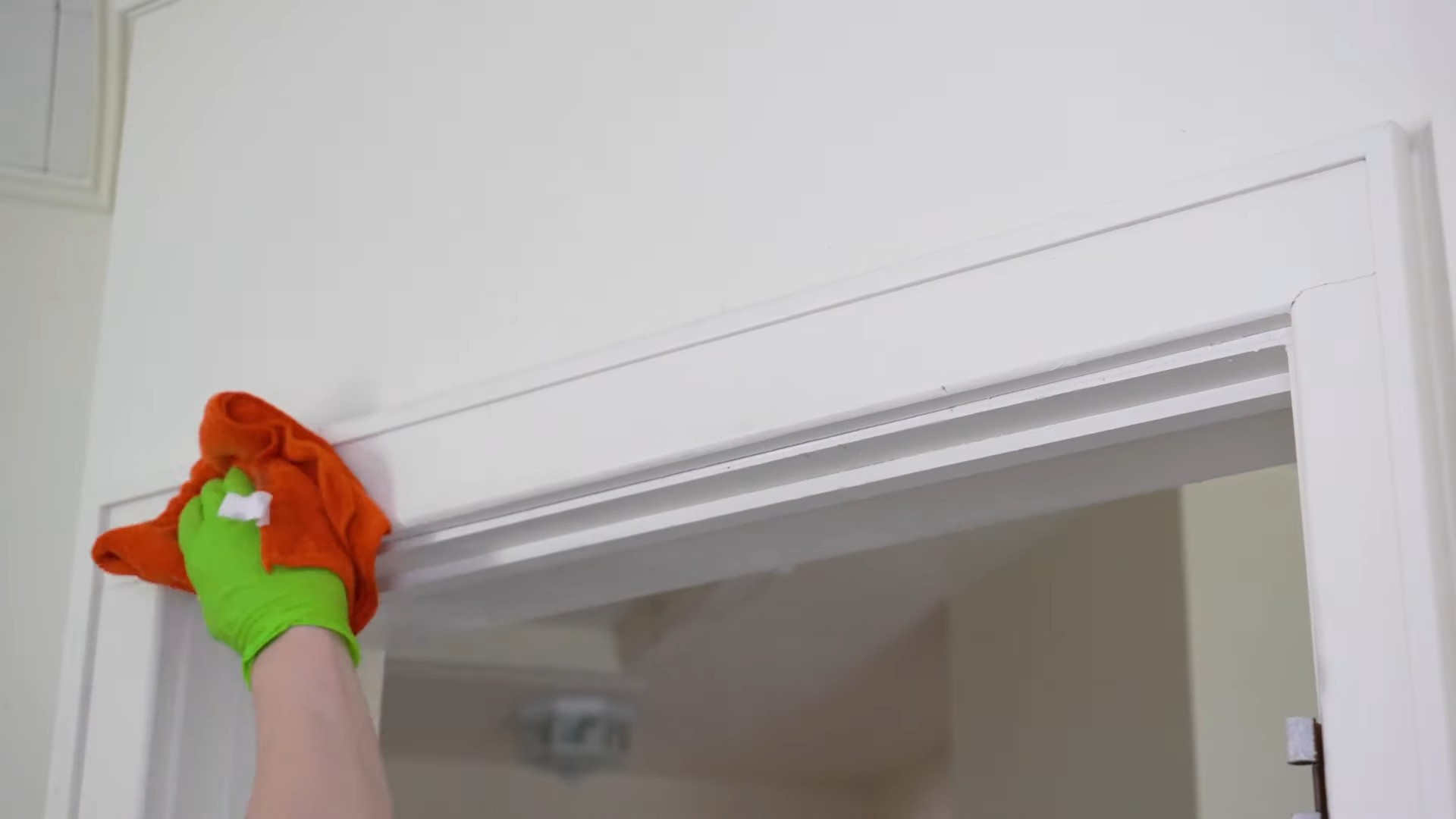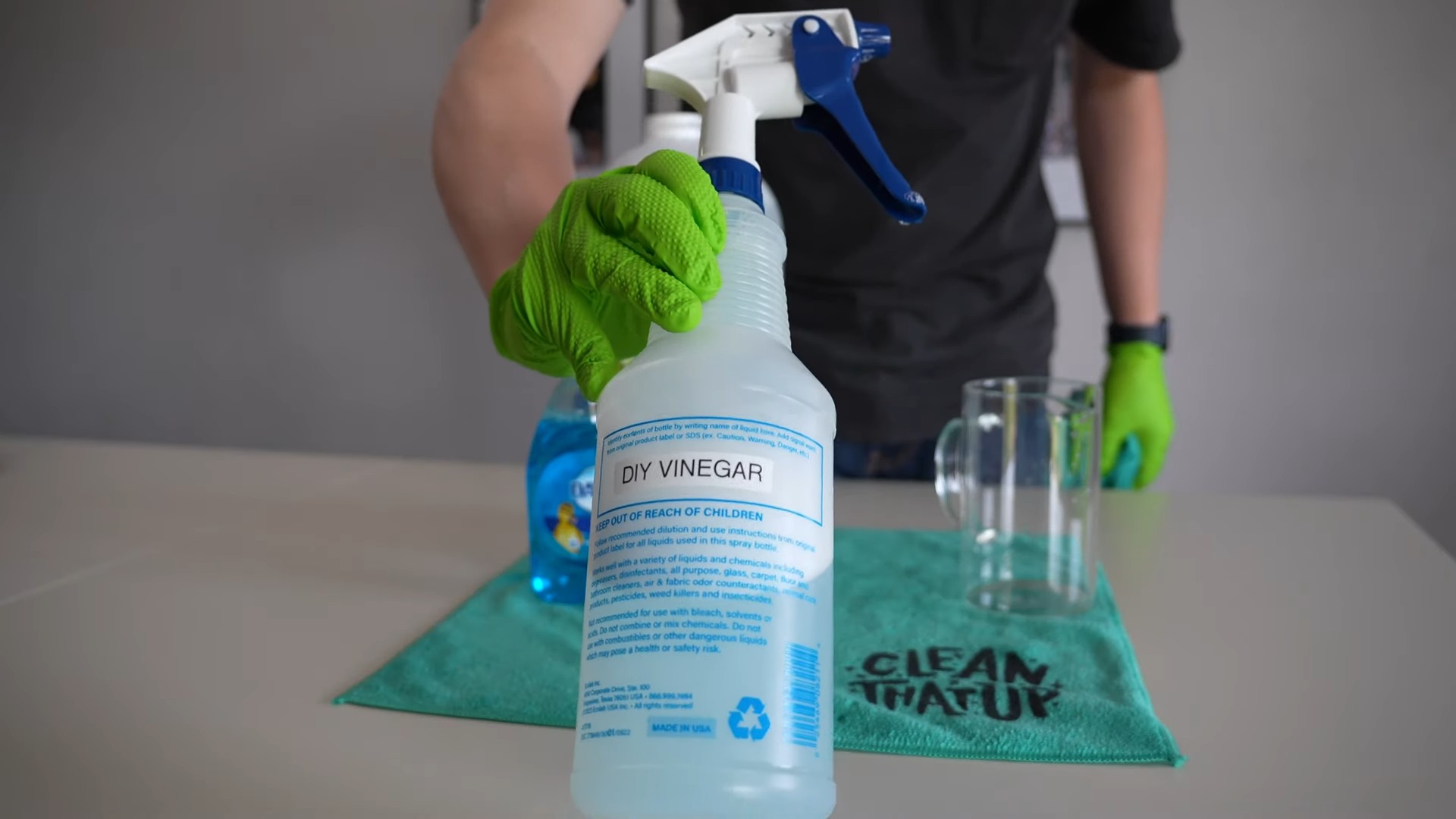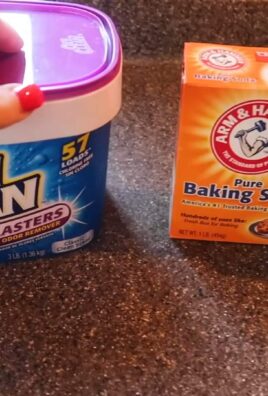DIY Vinegar Cleaners: Unlock the power of your pantry! Are you tired of harsh chemicals and sky-high prices for cleaning products? I know I was! That’s why I dove headfirst into the world of homemade solutions, and let me tell you, the results are amazing. For generations, vinegar has been a staple in households, not just for cooking, but also for its incredible cleaning properties. Think back to your grandmother’s cleaning rituals – chances are, vinegar played a starring role!
From ancient civilizations using it to preserve food to modern-day eco-conscious individuals seeking sustainable alternatives, vinegar’s versatility is undeniable. But why should you bother with DIY vinegar cleaners when you can just grab a bottle off the shelf? Well, for starters, you’ll save a ton of money. Plus, you’ll be reducing your exposure to potentially harmful chemicals, creating a healthier environment for yourself and your family.
This article is your ultimate guide to creating powerful, effective, and all-natural cleaning solutions using simple vinegar. We’ll explore a range of recipes, from all-purpose sprays to stubborn stain removers, and I’ll share my top tips and tricks for making the most of this incredible ingredient. Get ready to ditch the chemicals and embrace the cleaning power of vinegar!

DIY Vinegar Cleaners: Your Guide to a Sparkling Home, Naturally!
Hey there, fellow DIY enthusiasts! I’m so excited to share my favorite vinegar cleaning recipes with you. I’ve been using vinegar as a cleaning agent for years, and honestly, I’m amazed by its versatility and effectiveness. Plus, it’s super affordable and eco-friendly – a win-win! So, ditch those harsh chemicals and let’s get cleaning with the power of vinegar!
Why Vinegar?
Before we dive into the recipes, let’s quickly talk about why vinegar is such a fantastic cleaning agent. It’s a mild acid, which means it’s great at cutting through grease, grime, and hard water stains. It also has antibacterial properties, making it a great choice for disinfecting surfaces. And the best part? It’s non-toxic, so you don’t have to worry about exposing your family or pets to harmful chemicals.
General Guidelines for Using Vinegar Cleaners
Before we get started, here are a few general tips to keep in mind:
* Always use distilled white vinegar: This is the most common and effective type of vinegar for cleaning. Avoid using other types of vinegar, like apple cider vinegar or balsamic vinegar, as they can stain surfaces.
* Dilute vinegar with water: Vinegar is acidic, so it’s important to dilute it with water to prevent damage to certain surfaces. A 1:1 ratio of vinegar to water is generally a good starting point.
* Test on an inconspicuous area first: Before cleaning an entire surface, always test the vinegar solution on a small, hidden area to make sure it doesn’t cause any discoloration or damage.
* Don’t mix vinegar with bleach: This is extremely important! Mixing vinegar with bleach creates toxic chlorine gas, which can be very dangerous.
* Use caution on certain surfaces: Avoid using vinegar on natural stone surfaces like marble and granite, as it can etch the stone. Also, avoid using it on waxed furniture, as it can strip the wax.
All-Purpose Vinegar Cleaner
This is my go-to cleaner for almost everything! It’s perfect for cleaning countertops, sinks, appliances, and even floors (except for hardwood, of course!).
What you’ll need:
* Spray bottle
* 1 cup distilled white vinegar
* 1 cup water
* Optional: 10-20 drops of your favorite essential oil (lemon, lavender, and tea tree are great choices)
Instructions:
1. Combine ingredients: In the spray bottle, combine the vinegar, water, and essential oils (if using).
2. Shake well: Shake the bottle well to mix the ingredients.
3. Spray and wipe: Spray the solution onto the surface you want to clean and wipe it down with a clean cloth or sponge.
4. Rinse (optional): If you’re cleaning a surface that comes into contact with food, you may want to rinse it with water after wiping it down.
Vinegar Window and Glass Cleaner
Say goodbye to streaks and smudges! This vinegar window cleaner will leave your windows and mirrors sparkling clean.
What you’ll need:
* Spray bottle
* 1/2 cup distilled white vinegar
* 1 1/2 cups water
* Optional: 1/4 teaspoon liquid dish soap
Instructions:
1. Combine ingredients: In the spray bottle, combine the vinegar, water, and dish soap (if using).
2. Shake gently: Gently shake the bottle to mix the ingredients. Avoid creating too many bubbles if you’re using dish soap.
3. Spray and wipe: Spray the solution onto the window or mirror and wipe it down with a clean microfiber cloth.
4. Dry with a clean cloth: For best results, dry the surface with another clean, dry microfiber cloth.
Vinegar Toilet Bowl Cleaner
Keep your toilet bowl clean and fresh with this simple vinegar cleaner.
What you’ll need:
* 1 cup distilled white vinegar
* Toilet brush
Instructions:
1. Pour vinegar into the bowl: Pour the vinegar into the toilet bowl.
2. Let it sit: Let the vinegar sit for at least 30 minutes, or even overnight for tougher stains.
3. Scrub and flush: Scrub the bowl with a toilet brush and then flush.
Vinegar Shower Cleaner
This cleaner will help prevent soap scum and mildew buildup in your shower.
What you’ll need:
* Spray bottle
* 1 cup distilled white vinegar
* 1 cup water
* Optional: A few drops of tea tree oil (for extra antibacterial power)
Instructions:
1. Combine ingredients: In the spray bottle, combine the vinegar, water, and tea tree oil (if using).
2. Spray after each shower: After each shower, spray the solution onto the shower walls, door, and floor.
3. Let it air dry: Let the solution air dry. No need to rinse!
Vinegar Drain Cleaner
Unclog your drains naturally with this simple vinegar and baking soda solution.
What you’ll need:
* 1/2 cup baking soda
* 1 cup distilled white vinegar
* Hot water
Instructions:
1. Pour baking soda down the drain: Pour the baking soda down the drain.
2. Pour vinegar down the drain: Pour the vinegar down the drain after the baking soda.
3. Let it fizz: Let the mixture fizz for about 30 minutes.
4. Flush with hot water: Flush the drain with hot water for several minutes.
Vinegar Coffee Maker Cleaner
Keep your coffee maker clean and functioning properly with this vinegar cleaning method.
What you’ll need:
* Distilled white vinegar
* Water
Instructions:
1. Fill the water reservoir: Fill the coffee maker’s water reservoir with a solution of half distilled white vinegar and half water.
2. Brew halfway: Start the brewing cycle and let it brew halfway through.
3. Turn off and let sit: Turn off the coffee maker and let the vinegar solution sit in the reservoir for about 30 minutes to an hour. This allows the vinegar to dissolve mineral buildup.
4. Finish brewing: Turn the coffee maker back on and finish the brewing cycle.
5. Rinse with water: Rinse the coffee maker by running two or three cycles with fresh water only. This will remove any remaining vinegar taste and smell.
Vinegar Laundry Softener
Skip the store-bought fabric softener and use vinegar instead! It will leave your clothes soft and fresh without any harsh chemicals.
What you’ll need:
* 1/2 cup distilled white vinegar
Instructions:
1. Add to the rinse cycle: Add the vinegar to the fabric softener dispenser of your washing machine during the rinse cycle.
2. Enjoy soft clothes: Your clothes will come out soft and fresh, and you won’t even smell the vinegar!
Vinegar Microwave Cleaner
Easily clean your microwave with the power of steam and vinegar.
What you’ll need:
* 1 cup water
* 2 tablespoons distilled white vinegar
* Microwave-safe bowl
Instructions:
1. Combine water and vinegar: In the microwave-safe bowl, combine the water and vinegar.
2. Microwave for several minutes: Microwave the mixture on high for 3-5 minutes, or until the solution boils and the microwave is filled with steam.
3. Let it sit: Let the bowl sit in the microwave for another 5-10 minutes. The steam will loosen any stuck-on food particles.
4. Wipe clean: Carefully remove the bowl (it will be hot!) and wipe down the inside of the microwave with a clean cloth or sponge.
Vinegar Cutting Board Sanitizer
Keep your cutting boards clean and sanitized with vinegar.
What you’ll need:
* Distilled white vinegar
* Clean cloth or sponge
Instructions:
1. Apply vinegar to the cutting board: Pour or spray vinegar onto the cutting board.
2. Let it sit: Let the vinegar sit for a few minutes to sanitize the surface.
3. Wipe clean: Wipe the cutting board clean with a clean cloth or sponge.
4. Rinse (optional): If desired, rinse the cutting board with water after wiping it down.
Vinegar Weed Killer
This is a great natural alternative to chemical weed killers.
What you’ll need:
* Spray bottle
* Distilled white vinegar
* Optional: 1 tablespoon salt
* Optional: 1 teaspoon liquid dish soap
Instructions:
1. Combine ingredients: In the spray bottle, combine the

Conclusion
So, there you have it! Ditching those expensive, chemical-laden cleaners and embracing the power of DIY vinegar cleaners is not just a trend; it’s a smart, sustainable, and surprisingly effective way to keep your home sparkling. We’ve explored the versatility of vinegar, from its grease-cutting prowess in the kitchen to its disinfecting abilities in the bathroom. You’ve seen how simple it is to create customized cleaning solutions tailored to your specific needs, all while saving money and reducing your environmental footprint.
But why is this DIY trick a must-try? Beyond the cost savings and eco-friendliness, it’s about control. You know exactly what’s going into your cleaners, eliminating the worry of harsh chemicals and allergens that can irritate sensitive skin or pose health risks to your family and pets. Plus, the satisfaction of creating something useful and effective with your own two hands is a reward in itself.
Don’t be afraid to experiment! While we’ve provided some basic recipes, the beauty of DIY lies in its adaptability. For a more potent degreaser, try increasing the vinegar concentration. If you’re tackling stubborn stains, consider adding a tablespoon of baking soda to your vinegar solution for an extra boost. For a refreshing scent, infuse your vinegar with citrus peels or herbs like lavender or rosemary for a few weeks before using it in your cleaners. You can even create a specialized wood cleaner by combining vinegar with olive oil for a nourishing and polishing effect. Remember to always test your DIY cleaner on an inconspicuous area first, especially on delicate surfaces like marble or granite.
We understand that switching to DIY cleaners might seem daunting at first, but trust us, it’s easier than you think. Start with one simple recipe, like the all-purpose cleaner, and gradually incorporate more DIY solutions into your cleaning routine. You’ll be amazed at how effective and versatile these homemade cleaners can be.
Now, it’s your turn! We encourage you to give these DIY vinegar cleaners a try and experience the difference for yourself. Share your experiences, tips, and variations in the comments below. Let’s build a community of eco-conscious cleaners and inspire others to embrace a healthier and more sustainable way of life. What are you waiting for? Grab that bottle of vinegar and get cleaning! We can’t wait to hear about your sparkling successes!
Frequently Asked Questions (FAQs)
What types of vinegar are best for cleaning?
White distilled vinegar is generally considered the best type of vinegar for cleaning. It’s inexpensive, readily available, and has a high acidity level, making it effective at cutting through grease, grime, and bacteria. Apple cider vinegar can also be used, but it has a lower acidity and a stronger scent, which some people may find less appealing. Avoid using colored vinegars, such as balsamic or red wine vinegar, as they can stain surfaces.
Can I use vinegar to clean everything in my house?
While vinegar is a versatile cleaner, it’s not suitable for all surfaces. Avoid using vinegar on natural stone surfaces like marble, granite, and limestone, as the acidity can etch and damage them. It’s also best to avoid using vinegar on waxed wood furniture, as it can strip the wax finish. Additionally, vinegar can damage rubber parts in some appliances, so check your appliance’s manual before using vinegar to clean it. Always test your DIY vinegar cleaner on an inconspicuous area first to ensure it doesn’t cause any damage or discoloration.
Will my house smell like vinegar after cleaning?
The strong scent of vinegar is a common concern for those considering DIY vinegar cleaners. However, the vinegar smell typically dissipates within a few hours. To minimize the odor, ensure proper ventilation by opening windows or using a fan while cleaning. You can also add essential oils to your vinegar solution to mask the scent. Citrus oils like lemon, orange, and grapefruit are particularly effective at neutralizing the vinegar smell.
How long can I store DIY vinegar cleaners?
DIY vinegar cleaners generally have a long shelf life due to the preservative properties of vinegar. You can store them for several months in a cool, dark place. However, if you add fresh ingredients like citrus peels or herbs, the shelf life may be shorter. It’s best to use cleaners with fresh ingredients within a few weeks. Always label your DIY cleaners with the date you made them to keep track of their freshness.
Are DIY vinegar cleaners safe for pets and children?
DIY vinegar cleaners are generally considered safe for pets and children, as they don’t contain harsh chemicals or toxins. However, it’s still important to exercise caution and keep cleaners out of reach of children and pets. Vinegar can be irritating if ingested or if it comes into contact with the eyes. If your pet or child accidentally ingests vinegar cleaner, rinse their mouth with water and contact a poison control center or veterinarian if necessary.
Can I mix vinegar with other cleaning products?
It’s generally not recommended to mix vinegar with other cleaning products, especially bleach. Mixing vinegar with bleach can create toxic chlorine gas, which can cause respiratory irritation and other health problems. Avoid mixing vinegar with ammonia as well, as this can create toxic chloramine gas. When using DIY vinegar cleaners, it’s best to use them on their own and avoid combining them with other commercial cleaning products.
What essential oils are best to add to DIY vinegar cleaners?
Many essential oils can be added to DIY vinegar cleaners to enhance their cleaning power and scent. Some popular choices include:
* Lemon: Has a fresh, citrusy scent and is effective at cutting through grease.
* Tea tree: Has antibacterial and antifungal properties.
* Lavender: Has a calming scent and is effective at disinfecting.
* Eucalyptus: Has a refreshing scent and is effective at killing germs.
* Peppermint: Has a invigorating scent and is effective at repelling insects.
When adding essential oils to your vinegar cleaner, start with a few drops and adjust the amount to your preference. Always use pure, high-quality essential oils for the best results.
How do I clean my coffee maker with vinegar?
Cleaning your coffee maker with vinegar is a simple and effective way to remove mineral buildup and improve its performance. To clean your coffee maker, fill the water reservoir with a solution of equal parts white distilled vinegar and water. Run the coffee maker through a full brewing cycle. Then, run the coffee maker through two more brewing cycles with fresh water to rinse away any remaining vinegar.
How do I clean my microwave with vinegar?
Cleaning your microwave with vinegar is a quick and easy way to loosen food splatters and eliminate odors. To clean your microwave, combine 1 cup of water and 1/4 cup of white distilled vinegar in a microwave-safe bowl. Microwave the mixture on high for 5 minutes. Let the bowl sit in the microwave for another 5 minutes to allow the steam to loosen the food splatters. Then, carefully remove the bowl and wipe down the inside of the microwave with a clean cloth.
What are some other uses for DIY vinegar cleaners?
Beyond the typical cleaning tasks, DIY vinegar cleaners can be used for a variety of other purposes, including:
* Removing hard water stains from showerheads and faucets.
* Cleaning windows and mirrors for a streak-free shine.
* Deodorizing garbage disposals.
* Removing mildew from bathroom tiles.
* Cleaning cutting boards and countertops.
* Removing stains from clothing (always test on an inconspicuous area first).
* Cleaning and disinfecting toys.
* Polishing chrome and stainless steel.




Leave a Comment